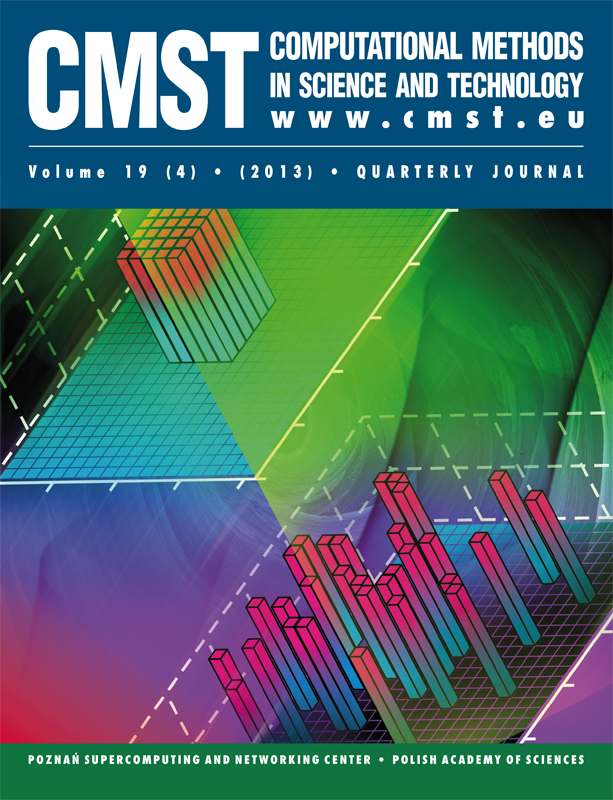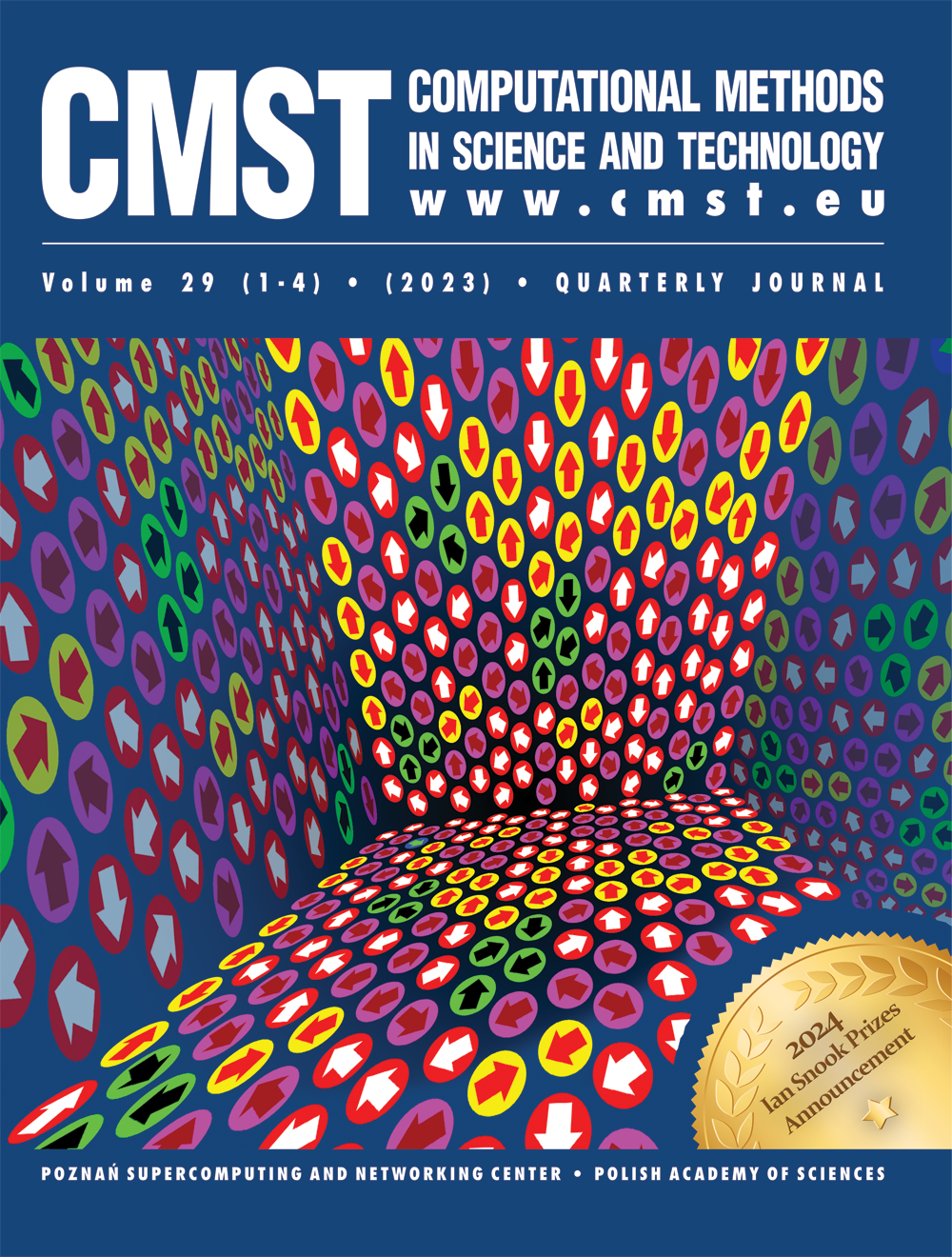PREDICTION OF PROTEIN SECONDARY STRUCTURE USING LOGICAL ANALYSIS OF DATA ALGORITHM
Błażewicz Jacek 1, Hammer P. 2, Łukasiak Piotr 1
1 Institute of Computing Sciences, Poznań University of Technology
& Institute of Bioorganic Chemistry, Polish Academy of Sciences, Poznań, Poland
2RUTCOR, Rutgers University, USA
DOI: 10.12921/cmst.2001.07.01.07-25
OAI: oai:lib.psnc.pl:512
Abstract:
In the paper, the problem of a secondary structure prediction, has been considered. The Logical Analysis of Data has been used as a method for this prediction. The approach has led to relatively high prediction accuracy for certain protein structures, as indicated by the experiments constructed.
References:
[1] M. Anthony, Accuracy of techniques for the logical analysis of data, Rutcor Research Raport, 23-96 (1996).
[2] F. C. Berenstein, T. F. Koeyzle, G. J. B. Williams, J. E. F. Meyer, M. D. Brice, J. R. Rodgers,
O. Kennard, T. Shimanouchi and M. Tatsumi, The protein Data Bank: A computer based archival
file for macromolecidar structures, Journal of Molecular Biology, 112, 525-542 (1977).
[3] E. Boros, P. L. Hammer, T. Ibaraki, A. Kogan, E. Mayoraz and I. Muchnik, An implementation
of logical analysis of data, Rutcor Research Report, 22-96 (1996).
[4] E. Boros, P. L. Hammer, T. Ibaraki and A. Kogan, Logical Analysis of Numerical Data, Rutcor
Research Raport, 04-97 (1997).
[5] E. Boros, P. L. Hammer, A. Kogan, E. Mayoraz and I. Muchnik, Logical Analysis of Data –
Overview, Rutcor Research Raport, 1-94 (1994).
[6] J. U. Bowie, R. Luthy and D. Eisenberg, A method to identify protein sequences that fold into a known three-dimensional structure, Science, 253, 164-170 (1991).
[7] Chou and G. Fasman, Conformational parameters for amino acids in helical, beta-sheet, and
random coil regions calculated from proteins, Biochemistry, 13, 211-222 (1974).
[8] Y. Crama, P. L. Hammer and T. Ibaraki, Cause-effect relationships andpartally defined Boolean functions, Annals of Operations Research, 16, 299-326 (1998).
[9] O. Ekin, P. L. Hammer and A. Kogan, Convexity and logical analysis of data, Rutcor Research
Raport, 5-98 (1998).
[10] G. F. Fasman, Protein conformation prediction. In Prediction of Protein Structure and
the Principles of Protein Conformation (G. D. Fasman, ed.), 193-316, Plenum, New York and
London (1989).
[11] J. Gamier, D. J. Osguthorpe and B. Robson, Analysis of the accurpacy and implications of simple methods for predicting the secondary structure of globular proteins, J. Mol. Biol. 120, 97-120 (1978).
[12] C. Geourjon and G. Deleage, SOPM: a self optimized method for protein secondary structure prediction, Protein Eng. 7,. 157-164 (1994).
[13] P. L. Hammer, Partially Defined Boolean Functions and Cause-Effect Relationships, presented at the International Conference on Multi-Attribute Decision Making Via OR-Based Expert Systems, University of Passau, Germany, April 1986.
[14] W. Kabsch and C. Sander, Dictionary ofprotein secondary structure: pattern recognition of hydrogen bonded and geometrical features, Biopolymers, 22, 2577-2637 (1983).
[15] R. D. King and M. J. E. Sternberg, Machine learning approach for the prediction of protein
secondary structure, J. Mol. Biol. 216, 441-457 (1990).
[16] A. Kolinski, L. Jaroszewski, P. Rotkiewicz and J. Skolnick, An efficient Monte Carlo model
of protein chains. Modeling the short-range correlations between side group centers of mass,
J. Phys. Chem. 02, 4628-4637 (1998).
[17] J. M. Levin, B. Robson and J. Gamier, An algorithm for secondary structure determination in proteins based on sequence similarity, FEBS Letters 205, 303-308 (1986).
[18] E. Mayoraz, C+ + Tools for Logical Analysis of Data, Rutcor Research Raport, 1-95 (1995).
[19] E. Mayoraz, I. Dubchak and I. Muchnik, Relation between protein structure, sequence homology and composition of amino acids, Rutcor Research Raport, 6-95 (1995).
[20] S. Muggleton, R. D. King and M. J. E. Sternberg, Protein secondary structure prediction using logic based machine learning, Protein Eng. 5, 647-657 (1992).
[21] B. Rost and C. Sander, Prediction of protein secondary structure at better than 70% accuracy, JMB 232, 584-599 (1993).
[22] B. Rost and C. Sander, Combining evolutionary information and neural networks to predict protein secondary structure, Proteins 19, 55-72 (1994).
[23] J. Skolnick and A. Kolinski, Monte Carlo approaches to the protein folding problem, Monte Carlo Methods in Chemical Physics, D. Ferguson, J. I. Siepmann and D. G. Truhlar, Eds., Advances in Chemical Physics, John Wiley & Sons, 105, 203-242 (1999).
[24] T-M. Yi and E. S. Lander, Protein secondary structure prediction using nearest-neighbor methods, Journal of Molecular Biology, 232, 117-1129 (1993).
In the paper, the problem of a secondary structure prediction, has been considered. The Logical Analysis of Data has been used as a method for this prediction. The approach has led to relatively high prediction accuracy for certain protein structures, as indicated by the experiments constructed.
[1] M. Anthony, Accuracy of techniques for the logical analysis of data, Rutcor Research Raport, 23-96 (1996).
[2] F. C. Berenstein, T. F. Koeyzle, G. J. B. Williams, J. E. F. Meyer, M. D. Brice, J. R. Rodgers,
O. Kennard, T. Shimanouchi and M. Tatsumi, The protein Data Bank: A computer based archival
file for macromolecidar structures, Journal of Molecular Biology, 112, 525-542 (1977).
[3] E. Boros, P. L. Hammer, T. Ibaraki, A. Kogan, E. Mayoraz and I. Muchnik, An implementation
of logical analysis of data, Rutcor Research Report, 22-96 (1996).
[4] E. Boros, P. L. Hammer, T. Ibaraki and A. Kogan, Logical Analysis of Numerical Data, Rutcor
Research Raport, 04-97 (1997).
[5] E. Boros, P. L. Hammer, A. Kogan, E. Mayoraz and I. Muchnik, Logical Analysis of Data –
Overview, Rutcor Research Raport, 1-94 (1994).
[6] J. U. Bowie, R. Luthy and D. Eisenberg, A method to identify protein sequences that fold into a known three-dimensional structure, Science, 253, 164-170 (1991).
[7] Chou and G. Fasman, Conformational parameters for amino acids in helical, beta-sheet, and
random coil regions calculated from proteins, Biochemistry, 13, 211-222 (1974).
[8] Y. Crama, P. L. Hammer and T. Ibaraki, Cause-effect relationships andpartally defined Boolean functions, Annals of Operations Research, 16, 299-326 (1998).
[9] O. Ekin, P. L. Hammer and A. Kogan, Convexity and logical analysis of data, Rutcor Research
Raport, 5-98 (1998).
[10] G. F. Fasman, Protein conformation prediction. In Prediction of Protein Structure and
the Principles of Protein Conformation (G. D. Fasman, ed.), 193-316, Plenum, New York and
London (1989).
[11] J. Gamier, D. J. Osguthorpe and B. Robson, Analysis of the accurpacy and implications of simple methods for predicting the secondary structure of globular proteins, J. Mol. Biol. 120, 97-120 (1978).
[12] C. Geourjon and G. Deleage, SOPM: a self optimized method for protein secondary structure prediction, Protein Eng. 7,. 157-164 (1994).
[13] P. L. Hammer, Partially Defined Boolean Functions and Cause-Effect Relationships, presented at the International Conference on Multi-Attribute Decision Making Via OR-Based Expert Systems, University of Passau, Germany, April 1986.
[14] W. Kabsch and C. Sander, Dictionary ofprotein secondary structure: pattern recognition of hydrogen bonded and geometrical features, Biopolymers, 22, 2577-2637 (1983).
[15] R. D. King and M. J. E. Sternberg, Machine learning approach for the prediction of protein
secondary structure, J. Mol. Biol. 216, 441-457 (1990).
[16] A. Kolinski, L. Jaroszewski, P. Rotkiewicz and J. Skolnick, An efficient Monte Carlo model
of protein chains. Modeling the short-range correlations between side group centers of mass,
J. Phys. Chem. 02, 4628-4637 (1998).
[17] J. M. Levin, B. Robson and J. Gamier, An algorithm for secondary structure determination in proteins based on sequence similarity, FEBS Letters 205, 303-308 (1986).
[18] E. Mayoraz, C+ + Tools for Logical Analysis of Data, Rutcor Research Raport, 1-95 (1995).
[19] E. Mayoraz, I. Dubchak and I. Muchnik, Relation between protein structure, sequence homology and composition of amino acids, Rutcor Research Raport, 6-95 (1995).
[20] S. Muggleton, R. D. King and M. J. E. Sternberg, Protein secondary structure prediction using logic based machine learning, Protein Eng. 5, 647-657 (1992).
[21] B. Rost and C. Sander, Prediction of protein secondary structure at better than 70% accuracy, JMB 232, 584-599 (1993).
[22] B. Rost and C. Sander, Combining evolutionary information and neural networks to predict protein secondary structure, Proteins 19, 55-72 (1994).
[23] J. Skolnick and A. Kolinski, Monte Carlo approaches to the protein folding problem, Monte Carlo Methods in Chemical Physics, D. Ferguson, J. I. Siepmann and D. G. Truhlar, Eds., Advances in Chemical Physics, John Wiley & Sons, 105, 203-242 (1999).
[24] T-M. Yi and E. S. Lander, Protein secondary structure prediction using nearest-neighbor methods, Journal of Molecular Biology, 232, 117-1129 (1993).



